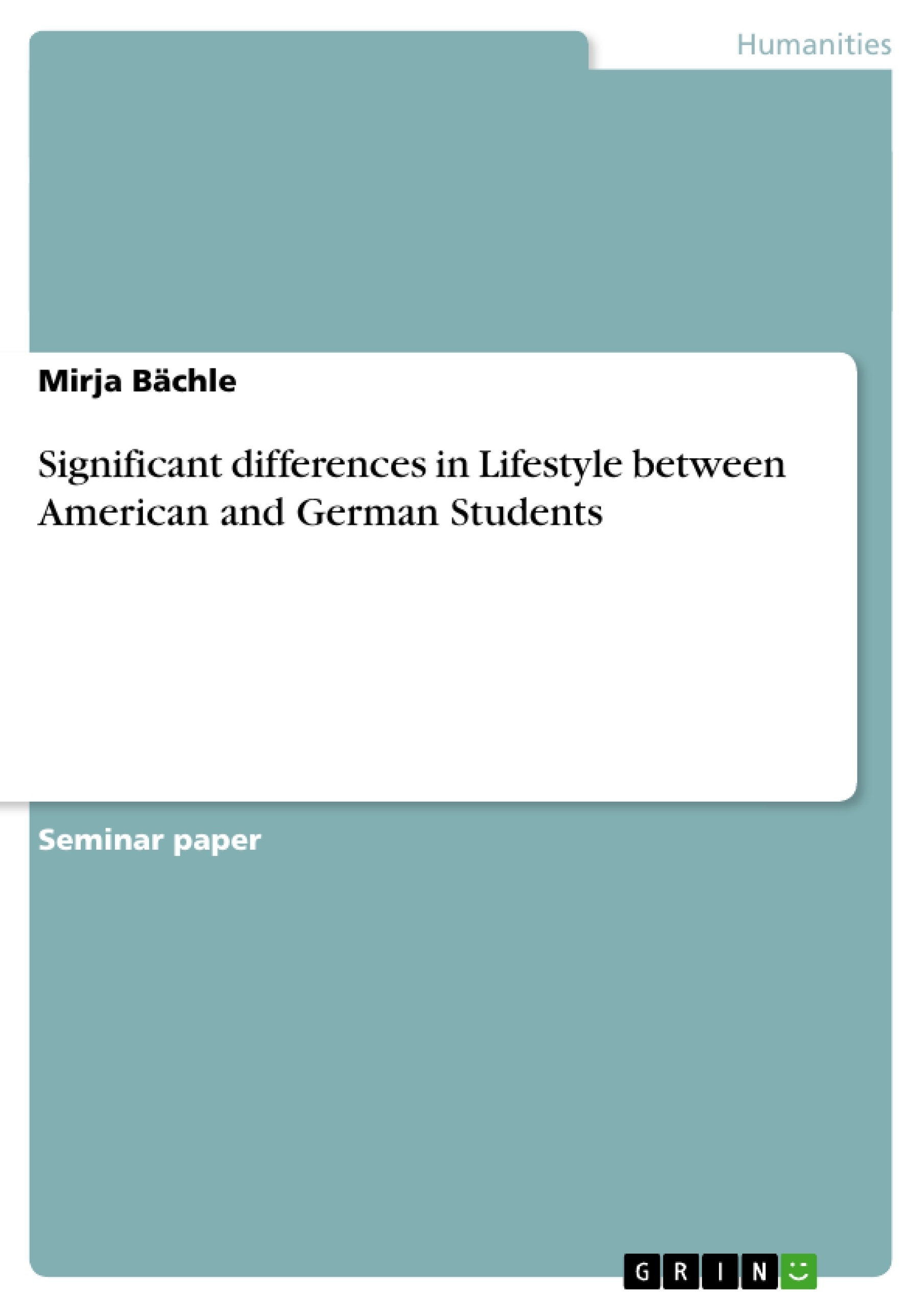Excerpt
Contents
1. Introduction
2. Higher education
2.1. Structure
2.2. Tuition
2.3. Schedule
2.4. Supervision
3. Lifestyle
3.1. Time & Money
3.2. Eating habits
3.3. Drinking habits
3.4. Sports
3.5. Volunteering
4. Conclusion
5. Sources
1. Introduction
Everybody, who has ever been confronted with typical American students, whether it was in real life or on television can tell, that there is something special about them. Somewhere along the way, American college life even attained cult status with movies and books about “the college experience”, like “The Animal House” or “American Pie 2” etc., which are popular all over the world.
A student lifestyle, no matter where it is, consists of an assortment of expectations, rules, traditions, relationships and communicative strategies employed by prior education and fellow culture members. The average student is in his early twenties, has not left parents’ home for too long and is basically adapting to a new life. This new phase is filled with the ambition to learn as much as possible to enlarge his personal sphere of knowledge in order to ensure a high future earning potential, whilst never forgetting the “fun factor”, which is also characteristic for a typical student.
Although students all over the world have these similar lifestyles in common, there are also significant differences. The author, who herself is a student too, wants to identify and explain major between the American and German student lifestyles.
2. Higher Education
2.1. Structure
In the United States, the higher education system functions without significant centrally established standards or direction, like the ZVS[1] in Germany. It is composed of some 3000 public and private institutions, which are governed for the most part by self-perpetuating boards of trustees in the case of private institutions or regents and trustees in the case of public institutions. There is an increasing trend to be seen in the United States towards privatization, as well as a continued focus on maintaining and increasing the level of excellence and competitiveness of elite, standard-setting institutions, rather than on assuring common and minimal standards of quality or opportunity in the education system as is the case in Germany. Both public and private universities in the U.S. finance their operations in varying degrees with public funds, as well as through tuition fees and private fund-raising.
In contrast to the United States, Germany’s system is based on a widely available government-funded higher education budget, and a prevailing ethic of equality of opportunity rather than differentiation. It is a more centralized and largely homogenous system, and internal decision-making power is largely vested in university faculties.
2.2. Tuition
German higher education is free of charge, as long as students attend one of the many public institutions. Students only have to worry about financing their costs of living. During the last few years private institutions like the International University of Bremen or the European Business School have opened their gates after American standards, but these schools are still few and, of course, also charge tuition fees.
The U.S. higher education system is very costly for the individual student. The tuition fees vary widely from one institution to the other. The average annual cost for tuition, room and board for private colleges is approximately US$ 24.000, but can reach as much as US$ 34.000[2] for one of the “Ivy League” universities like Harvard or Yale. Although the Americans have no academic restrictions like the German “numerus clauses” on certain fields, there are in its place financial obstacles. The cost of education itself acts as a filter, excluding those who cannot afford it. Whilst parents and students can obtain financial aid itself, economics often determines whether higher education is an option after high-school or not.
Despite these economics it is interesting to note that only 16% of Germans have a university degree (according to the Organization for Economic Cooperation and Development in Paris) compared to 33.2 % of Americans.
[...]
[1] Zentrale Vergabestelle für Studienplätze
[2] http://money.cnn.com, Sarah Max, “College: Is prestige worth the price?” 02/02/03, 1:13pm
- Quote paper
- Mirja Bächle (Author), 2003, Significant differences in Lifestyle between American and German Students, Munich, GRIN Verlag, https://www.grin.com/document/15314
Publish now - it's free






















Comments